Want to take your riding up a level? Here's how to become a better cyclist in seven simple steps
Becoming a better, fitter, faster cyclist doesn't need to be an experiment in self torture - cycling is fun, just set some goals and plan your riding to see improvement
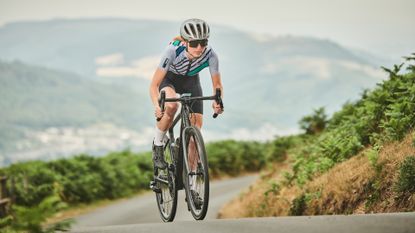
We’re not trying to make a new you. All we want is for you to get as much enjoyment out of your cycling as possible, and most importantly, improve.
The good news is, it’s not that hard to achieve, and providing you follow a few simple words of advice and use some common sense, the time you spend on your bike will be better than ever.
Structure your riding time to be a better cyclist
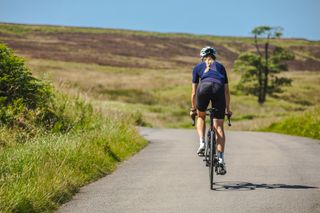
There shouldn’t be a limit to what you can achieve on a bike. Providing you want it enough, you can ride whenever and wherever. That’s the great thing about cycling — the more you put in, the more you get out of it.
But you do need to figure out what you want. This is the first step. It could be a 50-mile summer ride, it could be to increase your average speed on your commute by bike to work, it could even be to do a race. Whatever it is, remember there is no one stopping you.
Goals are good things to have. Without them, you’re just floating along. Don’t be ashamed at how small or big your goal is. Providing there is a plan in place, then there is no reason why you can’t get there.
OK, becoming a Tour de France rider in the space of six months is a little optimistic, but don’t be afraid to think big. On the other hand, if your goal is to ride to the cafe once a week, then go for it. Remember, it’s what you want to get out of it.
When setting goals, the tried and tested method to follow is the acronym, SMART:
Get The Leadout Newsletter
The latest race content, interviews, features, reviews and expert buying guides, direct to your inbox!
- Specific,
- Measurable,
- Attainable,
- Realistic
- Time-specific
It’s a good rule of thumb to follow, and pretty self-explanatory. By asking yourself, SMART ensures you know your goal inside out, what it involves, and when you should be reaching it by.
Some people feel a little embarrassed about jotting down what they want to achieve, as it may seem a tad serious. But it’s extremely useful. It shows that you want to take your cycling seriously, you want to become fitter, and most importantly, you want to enjoy it more. Putting something in your diary makes it much more likely to happen and research even states that those who set goals are more likely to stick to what they set out to do.
Stepping stones to being a fitter cyclist
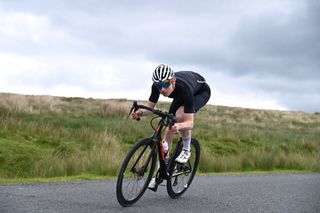
Once you have identified your end goal, the next step is to set some smaller in-between goals. Some call them stepping stones or ‘process goals’. Whatever you want to label them, having them in place will help provide structure and ensure you are going in the right direction.
For example, your main goal for the year is to take part in an entire day ride. Great. Now think of what this entails (stepping stones). Take the mileage. You aren’t going to be able to bash out a five or six hour ride straight away, you're going to need to train towards your first 100 mile ride.
This will need progression and a slow increase of rides that build up the miles. Are you fuelling optimally? Nutrition is another thing that needs to be taken into consideration. What to eat to ensure your body is fed well and is recovering effectively and properly.
Then bike fit, that will make your bike more comfortable, and possibly the introduction of sport masseurs to iron out any ache or soreness that may occur from lengthy riding. These smaller goals you may not think of straight away, but are vital in order to achieve what you have set out to do.
Set the end goal and work back to this moment, thinking about what needs to be achieved to reach the chequered flag.
Not training but riding

Having a plan like this doesn’t mean you’re a geek — it’s there to help. And the quicker your goals and stepping stones are identified, the quicker you can go about them.
Now, that doesn’t mean you have to go out training and punish yourself. As we have mentioned, structure is essential. You don’t have to become a lab rat and tweak your body by the percentage point, but just some organisation each week will help keep you progressing forward.
Don’t see your stepping stones as training. See them as cycling. Be creative. Ride different routes, arrange some weekend riding, grab some mates and ride to a country pub, or join a group ride. It all adds up and will be productive in conjunction with what you want to achieve, no matter what it is.
That’s what’s brilliant about cycling. If you want to get a beach body for the summer, you have to toil away in the gym, running on treadmills and lifting weights, pushing your body through barriers that are gruelling and monotonous. That’s the only way you can get to that point of six packs, bulging biceps and perky pectorals.
If you want to get better at cycling, all you have to do is jump on a bike. It’s something you love doing anyway, and the sheer variety of what you can do on two wheels will make sure you never become bored or lose motivation.
And remember, the fitter you become, the more the possibilities become endless.
Seven ways to become a fitter, better cyclist
Some are fitness based, some are fun based, some technique based. These aren’t set goals. They are tips and ideas to help you become a better, fitter and stronger cyclist.
1. Up your average speed by 1mph
You can easily go a mile an hour faster on your next ride without even being any fitter, it is all down to technique. Being an efficient rider and knowing how to carry speed will make you faster and conserve your energy, so it is an important skill to practise on every ride.
Cornering is an obvious situation when you can lose a lot of speed. Remember it is not how fast you enter the corner that counts but how much speed you carry through it. If you go in too hot and have to slam the brakes on that will slow you down significantly. Here you can find some tips on how to tackle bends quickly and safely on a road bike.
Mastering descents, and particularly descents before a hill is another area to work on. If there is an uphill after a descent and you can see it is safe, don’t brake or you will lose your momentum. Pedalling into a descent and holding your speed will allow you to roll up the other side with barely any effort at all.
Finally, think about your positioning. Wind drag is the thing that slows cyclists down the most, so to go a bit faster think about minimising your frontal area. Hold the drops instead of the tops of the bars and get low down.
2. Ride in total comfort
Cycling shouldn’t be uncomfortable although we know that bike riders often suffer aches and pains. However, there is a lot you can do to avoid it. Having a professional bike fit with a recommended fitter is a good starting point as mechanically your bike needs to fit you. If you're on a budget, here's our DIY bike fit guide with tips on how to set up your bike yourself.
Conditioning your body to hold your cycling posture has to take place off the bike. Core exercises and techniques such as Pilates strengthen the muscles that support your body, allowing you to keep your upper body still and providing a stable platform to pedal against as well as stopping you from slumping in the saddle.
Having a good routine of stretching and strengthening exercises to do after and between your rides will help prevent many of the niggles and aches that come from bending over the bars for significant periods of time. Looking for a routine you can do at home for free? Try these strengthening exercises for cyclists.
3. Get more cycling into your week
Finding more time to ride your bike is a challenge for every bike rider, and two things help: being creative and being organised. These two qualities will allow you to seize every opportunity that comes your way.
The most obvious way of spending more time on your bike is to ride to work. Even if you can’t cycle the full distance, just riding to the station will give you more time on your bike.
Look at other tasks you do, too. Can you cycle to your friends’ house for dinner or ride to your next business meeting? With a cycling backpack, change of clothes and a pack of wipes, you can easily be presentable for any occasion.
4. Never get ‘the bonk’

Running out of energy on the bike is a decidedly unpleasant experience but one that can be very easily avoided if you think about your nutrition before and during your ride. Sports nutrition doesn’t have to mean eating expensive supplements; bananas, cereal bars and jam sandwiches all contain lots of easily absorbed carbohydrates, are convenient to carry and easy to eat.
However, the easiest way of ensuring you stay hydrated and have enough energy for rides over two hours long is to use a carbohydrate drink - we've pulled together the best energy drinks for cycling here. Always carry a bit more food than you think you need and if you plan to be out for several hours start eating after the first 30 minutes. Taking on 60g of carbohydrate an hour is a good rule of thumb, so check the back of packets to make sure you have enough.
5. Ride 100 miles
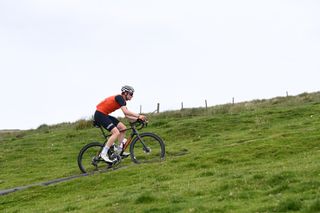
A century ride is a daunting task, but if you take your time and eat well, it is within the reach of every bike rider. There are several steps you can take to make it easier. Firstly, plan your route wisely, taking into account wind direction and hills. Put the hardest hills at the start of the ride (or avoid them altogether) and, if you can, finish with a tailwind to help blow you home.
If the aim is simply to cover 100 miles rather than trying to do it quickly, put aside a full day, start early and ride through to sunset. An all-day ride is a great adventure and without time pressures you won’t need to panic about speed or worry about stopping every hour or so. If you aren’t used to riding big distances, plan regular stops for a stretch, snack or walk around.
Pacing is really important to ensure that you have the energy you need to see you through to the end. Being able to chat to other riders is a good measure that you have your pacing right; if you are panting or out of breath it is time to slow right down. Remember the hare and the tortoise.
6. Love hills

There are many more reasons to love hills than hate them, but even so, hills have a poor reputation with bike riders. Hills make you fit. They may make your legs hurt and your lungs burn, but riding hills regularly will build leg strength and, by forcing you to work a little bit harder than usual, they will boost your cardiovascular fitness too. Don’t avoid them if you want to get faster.
Hills give variety to your rides. You see more from the top of a hill and it breaks up the pace, allowing you to have fun on the descents and push yourself on the way up. The more hills you ride, the better you'll get, and you will start to learn the different types of hills that suit you best. Try timing yourself up a long hill and throughout the year repeat the test and see your time come down. You can find tips on how to improve your climbing here.
7. Ride with your mates
We often see a group of guys speeding along in single file, more content with utilising slipstream rather than socialising. Wouldn’t it be great to ride together and chat rather than fixating on the wheel in front of you? It’s not a crime to chat when cycling, and being of the same ability as your mates will enable you to do this.
No one wants to be the slowcoach, where everyone waits for you at the top of each hill. Nor do you want to be begging for a push on the back to help get you up that monster of a drag. Get fit, get fast, and ride with your friends the whole day.

Thank you for reading 20 articles this month* Join now for unlimited access
Enjoy your first month for just £1 / $1 / €1
*Read 5 free articles per month without a subscription

Join now for unlimited access
Try first month for just £1 / $1 / €1
-
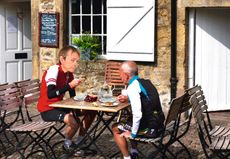 If you have too much money, coffee is right up there with cycling as a solution
If you have too much money, coffee is right up there with cycling as a solution'I suspect that you can divide cyclists into personality types around coffee', muses columnist Dr Hutch
By Michael Hutchinson Published
-
 Bring Bob Marley along for your next ride with State Bicycle’s 4/20 collaboration
Bring Bob Marley along for your next ride with State Bicycle’s 4/20 collaborationState Bicycle Co. announced today a Bob Marley collaboration that features Marley-themed bikes, frame bags, top caps and apparel.
By Kristin Jenny Published